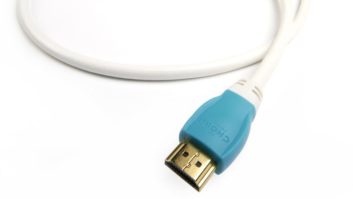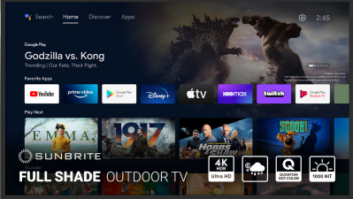The Video Electronics Standards Association (VESA) issued this week a new version of the DisplayPort audio/video interface, currently used primarily in the IT industry for connections between PCs and monitors.
What’s interesting about this new DisplayPort 1.3 and its predecessor, version 1.2a, is that some experts in the TV field feel they may offer a better connectivity solution than HDMI 2.0 for some of the high dynamic range, faster bit rates, expanded color gamut and greater bit-depth elements sought after by purists in developing next-generation standards for Ultra HD, such as the pending 4K Blu-ray Disc specification.
DisplayPort 1.3 is presented as an update to the widely used DisplayPort 1.2a standard, increasing the maximum link bandwidth to 32.4Gbps, with each of four lanes running at a link rate of 8.1Gbps/lane — a 50 percent increase from the previous version of the DisplayPort standard, VESA said.
Allowing for transport overhead, DisplayPort’s 32.4Gbps combined link rate delivers 25.92Gbps of uncompressed video data.
VESA said the enhancements will facilitate both higher-resolution displays, “as well as easier integration of DisplayPort into multi-protocol data transports, which will satisfy the consumer’s desire for simplicity and ease-of-use.”
For the IT community, the increased bandwidth enables higher-resolution monitors, including recently announced 5K monitors (with pixel resolutions of 5,120 by 2,880) using a single DisplayPort cable without the use of compression.
It will also enable higher resolutions when driving multiple monitors through a single connection using DisplayPort’s Multi-Stream feature, such as the use of two 4K UHD monitors, each with a pixel resolution of 3,840 by 2,160, when using VESA Coordinated Video Timing.
The new DisplayPort spec continues to support video conversion to VGA, DVI and HDMI, according to the VESA announcement.
Importantly, DisplayPort 1.3 also adds support for HDCP 2.2 and HDMI 2.0 with CEC (Consumer Electronics Control), “which enhances DisplayPort’s utility for television applications, including 4K video with copy protection,” VESA said.
The new standard also adds support for the 4:2:0 pixel structure, a video format commonly used on consumer digital television interfaces, which enables support for future 8K by 4K displays.
DisplayPort 1.3 also enhances DisplayPort’s value for multifunction interfaces that combine data transport, A/V transport and other capabilities on a single cable.
It further refines protocols that enable DisplayPort to share a single cable with other data types. With its higher 8.1Gbps per-lane link rate, DisplayPort 1.3 can support a single UHD monitor with 60Hz refresh and 24-bit color over two lanes, while assigning the remaining two lanes to increase capacity for alternate data types, such as SuperSpeed USB data, as allowed in DockPort.
DisplayPort is the A/V transport standard used by DockPort, Thunderbolt and other wired and wireless multifunction interface standards.
Despite the robust characteristics of the new interface, many in the CE community have told me that HDMI has such broad support among CE companies that it’s probably too late, politically speaking, to be switching sides for Ultra HD TV applications at this conjuncture.
Just don’t be surprised if a new debate begins before the next version of HDMI arrives.













